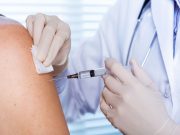Tag: Doctors
Practice’s Bariatric Nonsurgical Visits Up With Telehealth During Pandemic
Follow-up visits increased for nonsurgical providers; however, new patient and follow-up surgical visits did decrease
Few Ob-Gyns Can Prescribe Buprenorphine for Opioid Use
Obstetrician-gynecologists able to prescribe buprenorphine more likely located in the suburbs
Laws Promoting Flu Shot for Hospital Workers Can Cut Deaths
2.5 percent drop seen in monthly pneumonia, flu mortality rates with implementation of state laws requiring hospitals to offer flu shot
Vaccine Rollout Slows as Many Health Care Workers Balk at Shots
In nursing homes and to some degree in hospitals, employees are refusing shots, expressing fears of side effects
PCPs Spend Average of 18 Minutes With Each Patient
Shorter scheduled appointments tend to run over more often versus longer appointments
Mental Health Consequences of COVID-19 ID’d Across Populations
Health care workers have higher prevalence of insomnia; however, mental health problems seen across countries, gender
2014 to 2019 Saw Drop in Oncologists Accepting Industry Payments
Annual per-physician payment value decreased for those receiving less than $10,000, increased for those receiving more than $10,000
Few Adults Report Having Firearm Safety Discussions With Doctors
7.5 percent of respondents report having ever discussed firearm safety; 12 percent among those living with children
Inequities Seen in Accessing Telemedicine During COVID-19
Factors linked to fewer completed telemedicine visits include older age, Asian race, non-English as preferred language, Medicaid insurance
Distribution of Neurologists Across U.S. Varies Widely
Variation in percentage of patients seen by a neurologist mostly observed among those with dementia, pain, stroke














